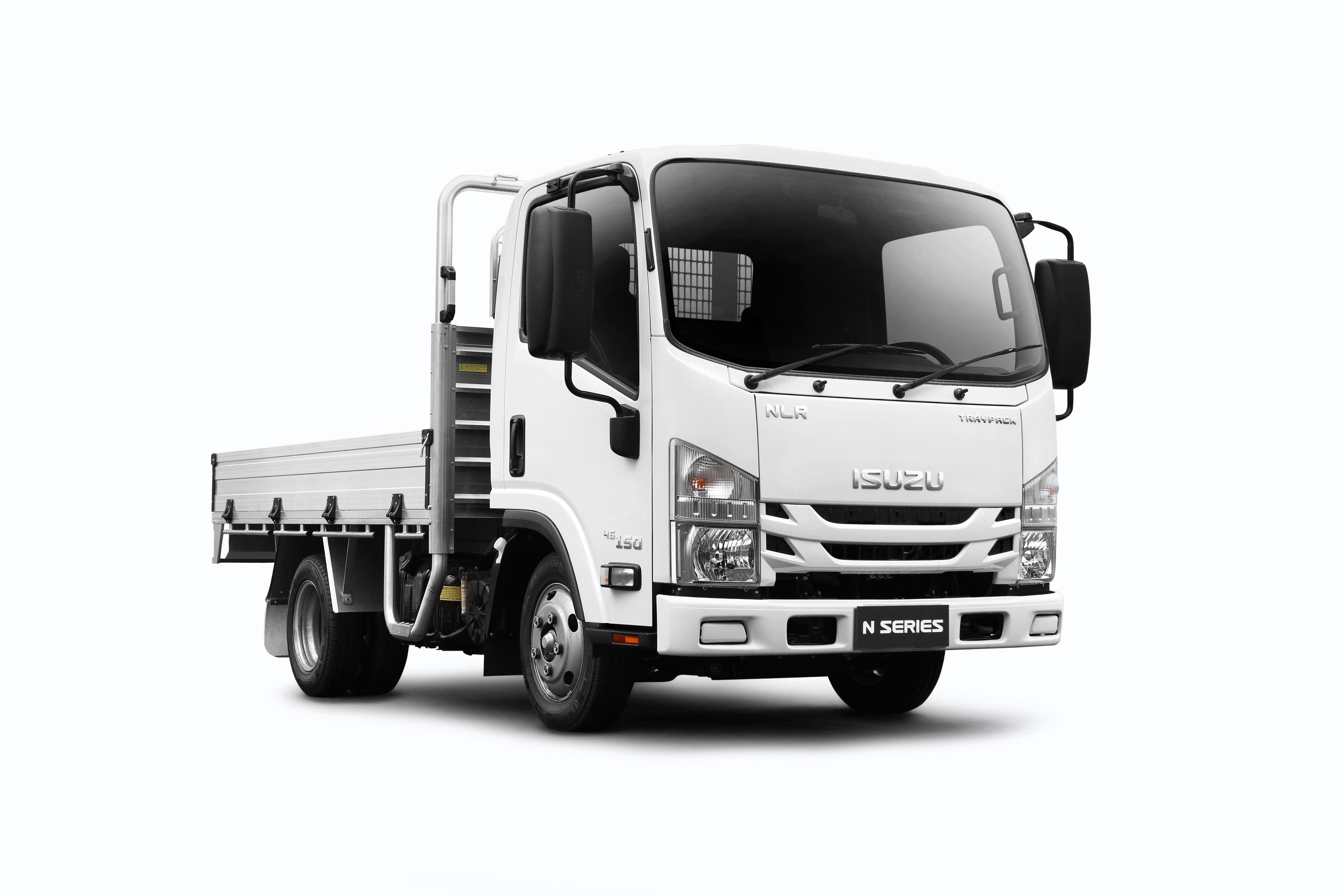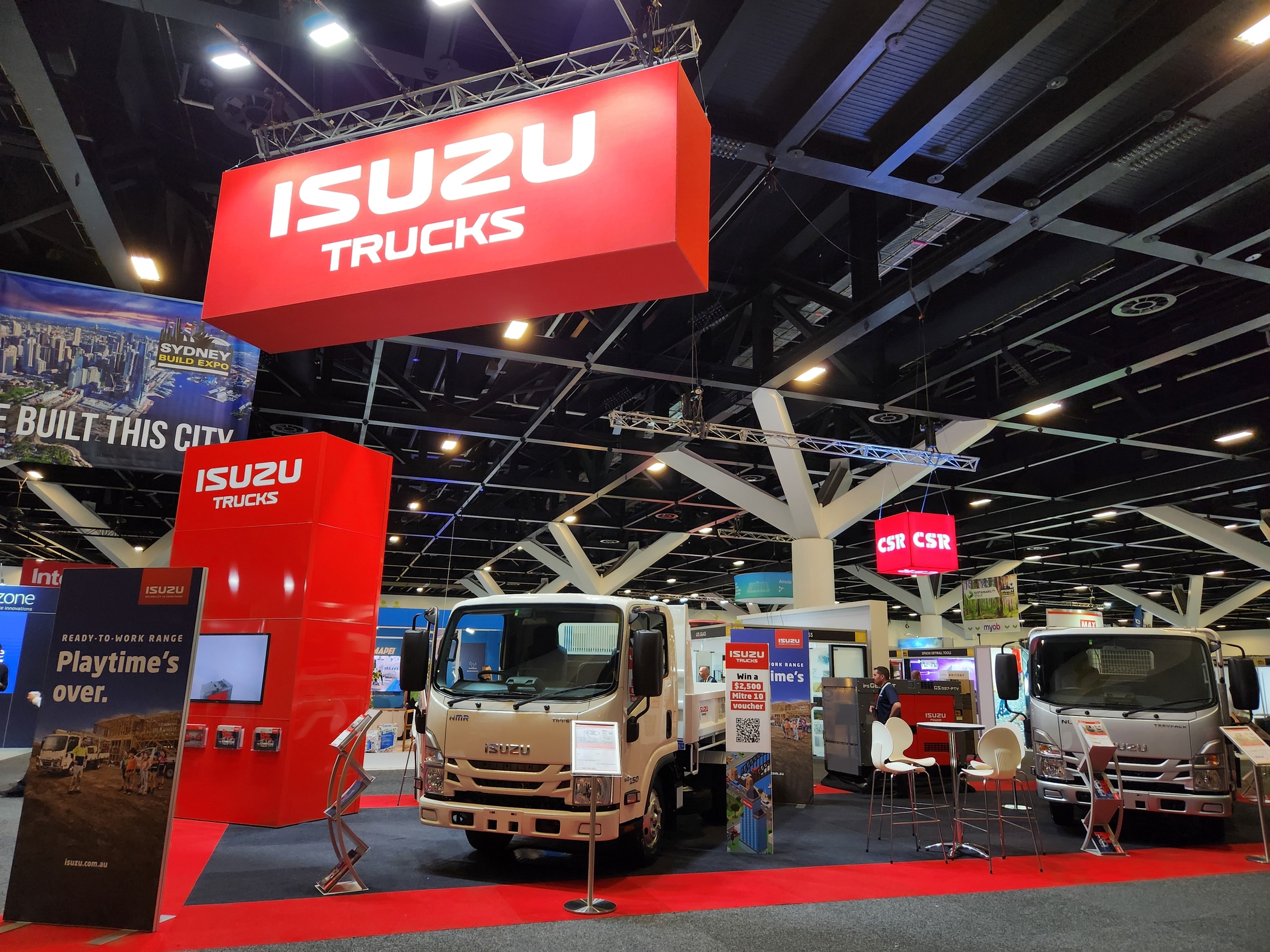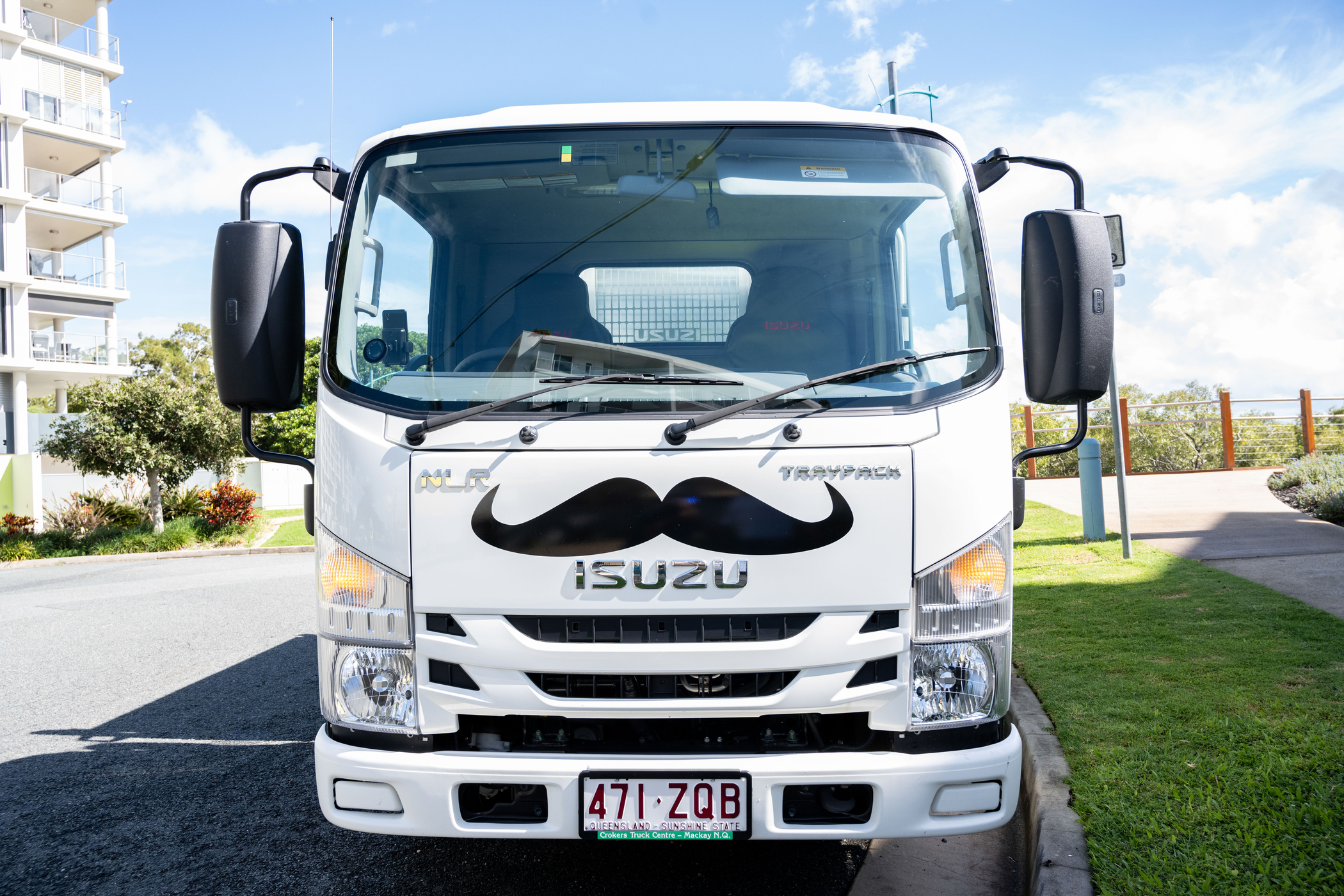TRUCK VS UTE

It’s been a trying time for Australia, with our country facing challenges from drought and bushfires to the ongoing COVID-19 crisis.
Our current situation has certainly reinforced the crucial role essential businesses play in our everyday life, bringing us needed goods and services—to resupply medical essentials, to stock supermarket shelves, and to deliver direct-to-door services such as mail and house repairs.
These last mile deliveries often see the use of light trucks and other commercial vehicles… and the options available mean that you can almost certainly find one to suit your business needs.
However, the age-old dilemma remains: should you get a light truck, or a ute (or perhaps a van)?
To buy or not to buy
Before looking at which work vehicle is better suited for your business needs, let’s address the question on most of our minds… Is this the right time to buy?
Now may not seem like the most obvious time to invest in a new piece of equipment, especially with the current COVID-19–led economic uncertainty.
But taking into account the federal and state governments’ stimulus packages, comprising measures such as cashflow boost for businesses, increased instant asset write-off threshold and accelerated depreciation, now is a good time for Australian businesses to make use of these measures—either to upgrade transport options in order to stay operational and meet increased essential services, freight and distribution demands, or in preparation for eventual recovery.
Additionally, with health and safety always in mind—not only due to COVID-19, but also complying with Chain of Responsibility (CoR) obligations—it’s worth looking at whether your work vehicle continues to hit the mark in terms of payload capacity, reliability and efficiency.
Payload
No matter what your trade or service, payload will be at the top of your considerations, from both a practical and safety point of view.
Light trucks, in some cases, are as compact and easily maneuverable as utes, and are specifically engineered to handle heavier payloads than their smaller cousins. This makes trucks a sensible fit for trades and services like last mile delivery, house repairs and maintenance, construction, landscaping and excavation.
A truck with payload to spare can provide extra peace of mind, ensuring compliance with CoR obligations, and minimising the risks of potentially overloading your vehicle.
Which brings us to…
Towing capacity
Comparing the different types of commercial vehicles in the light duty space, the GCM of a light truck (starting at 8,000 kg GCM) typically outweighs that of utes or vans, helping to avoid any banana-bend situations arising from overloading the chassis.
 While some 4x4 utes could maybe tow up to 3,500 kg, loading any vehicle to its highest tolerance point for extended periods will wear down parts and componentry rapidly, while putting additional strain on the engine. And this is all before taking into account the unintended cost of increased fuel usage performing this task.
And it’s all too easy to overestimate towing capacity, given that an attractive advertised towing capacity doesn’t always equal the real on-the-job capacity.
Space
If size is a priority, a light truck will offer more bang for buck than a ute or van in regard to both cabin layout and that all-important payload capacity.
A dual cab truck will comfortably cart a larger team without a negative impact on payload, while extra room in the back and front will be handy when it comes to storing and finding work tools.
And a work vehicle’s not just all work and no play. With a versatile light truck, you’ll have additional space (and power) needed for the caravan, dirt bikes, the whole family and the dog, camping gear… all without the worry of being overweight and unsafe.
Efficiency: pre-bodied vs custom body build
Buying a commercial work vehicle, like a truck or a ute, often means waiting for the custom body to be built.
But if you’re thinking of taking advantage of the government’s COVID-19 business stimulus package initiatives such as the increased Instant Asset Write-Off threshold, which requires eligible businesses to have assets first used or installed ready for use by 30 June 2020… You’ll want to cut down on waiting time, which a pre-bodied truck can offer.
While some 4x4 utes could maybe tow up to 3,500 kg, loading any vehicle to its highest tolerance point for extended periods will wear down parts and componentry rapidly, while putting additional strain on the engine. And this is all before taking into account the unintended cost of increased fuel usage performing this task.
And it’s all too easy to overestimate towing capacity, given that an attractive advertised towing capacity doesn’t always equal the real on-the-job capacity.
Space
If size is a priority, a light truck will offer more bang for buck than a ute or van in regard to both cabin layout and that all-important payload capacity.
A dual cab truck will comfortably cart a larger team without a negative impact on payload, while extra room in the back and front will be handy when it comes to storing and finding work tools.
And a work vehicle’s not just all work and no play. With a versatile light truck, you’ll have additional space (and power) needed for the caravan, dirt bikes, the whole family and the dog, camping gear… all without the worry of being overweight and unsafe.
Efficiency: pre-bodied vs custom body build
Buying a commercial work vehicle, like a truck or a ute, often means waiting for the custom body to be built.
But if you’re thinking of taking advantage of the government’s COVID-19 business stimulus package initiatives such as the increased Instant Asset Write-Off threshold, which requires eligible businesses to have assets first used or installed ready for use by 30 June 2020… You’ll want to cut down on waiting time, which a pre-bodied truck can offer.
 There are many useful pre-bodied truck options to choose from, offering versatility and payload capacity a ute or van just can’t quite match.
There are many useful pre-bodied truck options to choose from, offering versatility and payload capacity a ute or van just can’t quite match.
 Just the right trucking touch
Some won’t have considered a truck for their business, for a variety of reasons from initial sticker price to just simply having never thought about it. Some trade and services operations swear by their truck—such as JLM Plumb’N’Gasfit, who opted for a pre-bodied field service set-up.
In addition to the size, efficiency and payload advantages of a light truck over a ute or a van, whole-of-life cost is also something to think about.
Some whole-of-life advantages to consider include the following:
Just the right trucking touch
Some won’t have considered a truck for their business, for a variety of reasons from initial sticker price to just simply having never thought about it. Some trade and services operations swear by their truck—such as JLM Plumb’N’Gasfit, who opted for a pre-bodied field service set-up.
In addition to the size, efficiency and payload advantages of a light truck over a ute or a van, whole-of-life cost is also something to think about.
Some whole-of-life advantages to consider include the following:
 Bottomline
At the end of the day, the type of work vehicle you choose—truck, ute, van—depends on what you need and expect.
Just be sure to check that you can legally, and safely, carry all the tools, equipment, materials and crew on the vehicle you choose!
Interested in how trucks are customised for our Australian landscape? Check out our article on localising imported trucks.
Bottomline
At the end of the day, the type of work vehicle you choose—truck, ute, van—depends on what you need and expect.
Just be sure to check that you can legally, and safely, carry all the tools, equipment, materials and crew on the vehicle you choose!
Interested in how trucks are customised for our Australian landscape? Check out our article on localising imported trucks.

 While some 4x4 utes could maybe tow up to 3,500 kg, loading any vehicle to its highest tolerance point for extended periods will wear down parts and componentry rapidly, while putting additional strain on the engine. And this is all before taking into account the unintended cost of increased fuel usage performing this task.
And it’s all too easy to overestimate towing capacity, given that an attractive advertised towing capacity doesn’t always equal the real on-the-job capacity.
Space
If size is a priority, a light truck will offer more bang for buck than a ute or van in regard to both cabin layout and that all-important payload capacity.
A dual cab truck will comfortably cart a larger team without a negative impact on payload, while extra room in the back and front will be handy when it comes to storing and finding work tools.
And a work vehicle’s not just all work and no play. With a versatile light truck, you’ll have additional space (and power) needed for the caravan, dirt bikes, the whole family and the dog, camping gear… all without the worry of being overweight and unsafe.
Efficiency: pre-bodied vs custom body build
Buying a commercial work vehicle, like a truck or a ute, often means waiting for the custom body to be built.
But if you’re thinking of taking advantage of the government’s COVID-19 business stimulus package initiatives such as the increased Instant Asset Write-Off threshold, which requires eligible businesses to have assets first used or installed ready for use by 30 June 2020… You’ll want to cut down on waiting time, which a pre-bodied truck can offer.
While some 4x4 utes could maybe tow up to 3,500 kg, loading any vehicle to its highest tolerance point for extended periods will wear down parts and componentry rapidly, while putting additional strain on the engine. And this is all before taking into account the unintended cost of increased fuel usage performing this task.
And it’s all too easy to overestimate towing capacity, given that an attractive advertised towing capacity doesn’t always equal the real on-the-job capacity.
Space
If size is a priority, a light truck will offer more bang for buck than a ute or van in regard to both cabin layout and that all-important payload capacity.
A dual cab truck will comfortably cart a larger team without a negative impact on payload, while extra room in the back and front will be handy when it comes to storing and finding work tools.
And a work vehicle’s not just all work and no play. With a versatile light truck, you’ll have additional space (and power) needed for the caravan, dirt bikes, the whole family and the dog, camping gear… all without the worry of being overweight and unsafe.
Efficiency: pre-bodied vs custom body build
Buying a commercial work vehicle, like a truck or a ute, often means waiting for the custom body to be built.
But if you’re thinking of taking advantage of the government’s COVID-19 business stimulus package initiatives such as the increased Instant Asset Write-Off threshold, which requires eligible businesses to have assets first used or installed ready for use by 30 June 2020… You’ll want to cut down on waiting time, which a pre-bodied truck can offer.
 There are many useful pre-bodied truck options to choose from, offering versatility and payload capacity a ute or van just can’t quite match.
There are many useful pre-bodied truck options to choose from, offering versatility and payload capacity a ute or van just can’t quite match.
- Pre-built body options for service bodies, tippers, curtain-siders, pantechs and trays…
- Short, medium and long wheelbase configurations
 Just the right trucking touch
Some won’t have considered a truck for their business, for a variety of reasons from initial sticker price to just simply having never thought about it. Some trade and services operations swear by their truck—such as JLM Plumb’N’Gasfit, who opted for a pre-bodied field service set-up.
In addition to the size, efficiency and payload advantages of a light truck over a ute or a van, whole-of-life cost is also something to think about.
Some whole-of-life advantages to consider include the following:
Just the right trucking touch
Some won’t have considered a truck for their business, for a variety of reasons from initial sticker price to just simply having never thought about it. Some trade and services operations swear by their truck—such as JLM Plumb’N’Gasfit, who opted for a pre-bodied field service set-up.
In addition to the size, efficiency and payload advantages of a light truck over a ute or a van, whole-of-life cost is also something to think about.
Some whole-of-life advantages to consider include the following:
- Fuel efficiency (in some cases)
- Part and component durability
- Longer overall lifecycle (in commercial applications)
- Increased vocational productivity
- Availability of parts and cost of replacement (including warranties)
- Estimated resale value
 Bottomline
At the end of the day, the type of work vehicle you choose—truck, ute, van—depends on what you need and expect.
Just be sure to check that you can legally, and safely, carry all the tools, equipment, materials and crew on the vehicle you choose!
Interested in how trucks are customised for our Australian landscape? Check out our article on localising imported trucks.
Bottomline
At the end of the day, the type of work vehicle you choose—truck, ute, van—depends on what you need and expect.
Just be sure to check that you can legally, and safely, carry all the tools, equipment, materials and crew on the vehicle you choose!
Interested in how trucks are customised for our Australian landscape? Check out our article on localising imported trucks.



Playtime’s over, get $3,500* to spend on extras.
If you’re ready to get serious about tackling bigger jobs, grab yourself an NLR 45-150 AMT SWB Traypack from the Ready-to-Work range for $62,990 drive away*. And to prove we aren’t playing, buy any NLR Traypack before June 30 and you’ll get $3,500* to spend on genuine accessories or an Essentials service agreement.
Learn more



